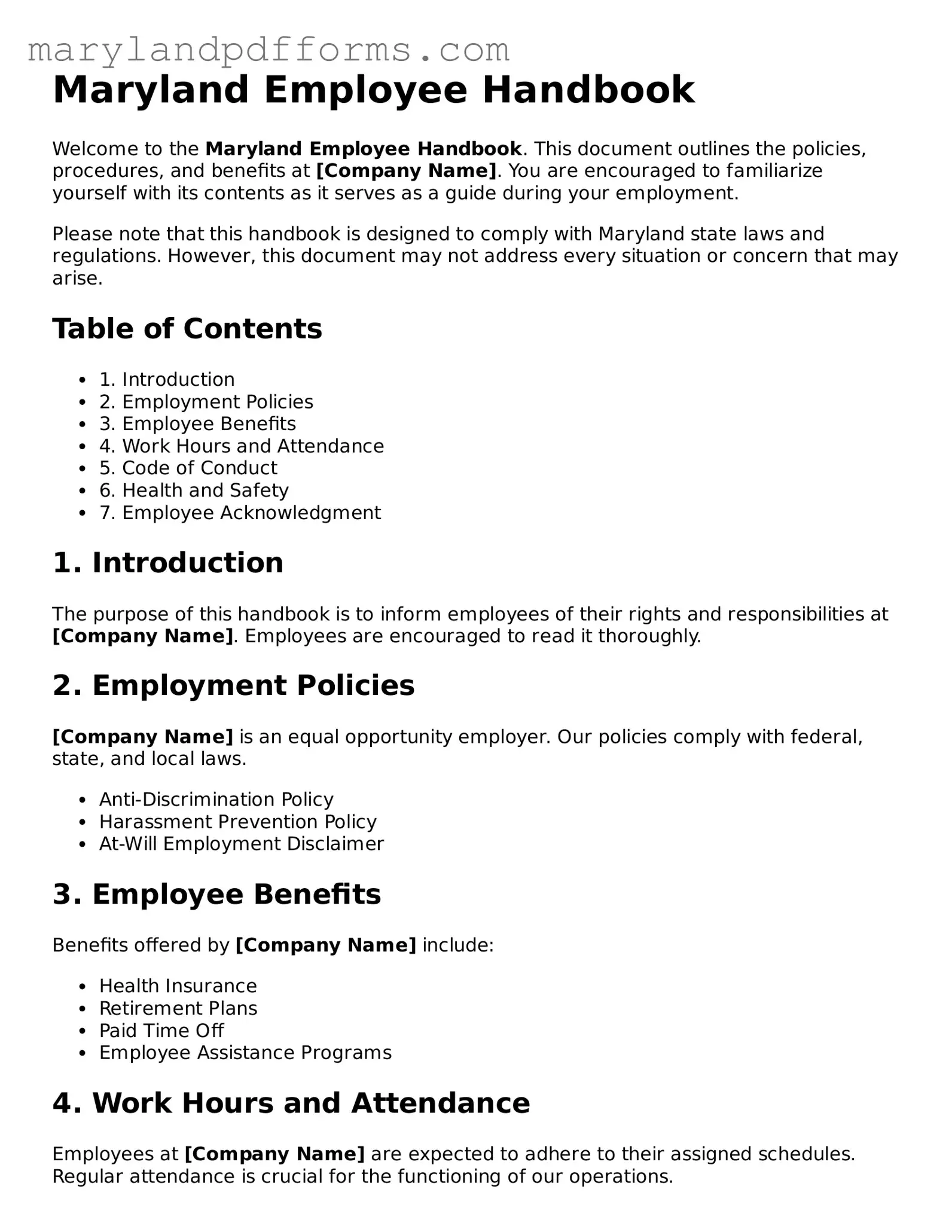The Maryland Employee Handbook form is a document that outlines the policies, procedures, and expectations for employees within a Maryland-based organization. It serves as a guide for both employers and employees, ensuring everyone understands their rights and responsibilities in the workplace.
Why is an Employee Handbook important?
An Employee Handbook is crucial for several reasons:
-
It helps set clear expectations for employee behavior and performance.
-
It provides information about company policies, including attendance, dress code, and workplace conduct.
-
It can protect the employer from legal disputes by documenting policies and procedures.
-
It fosters a positive workplace culture by promoting transparency and communication.
Who should create the Employee Handbook?
The responsibility for creating the Employee Handbook typically falls on the employer or human resources department. However, it is advisable to involve legal counsel to ensure compliance with state and federal laws. This collaboration can help avoid potential pitfalls and ensure that the handbook meets all necessary legal standards.
How often should the Employee Handbook be updated?
It is recommended to review and update the Employee Handbook at least annually. Changes in laws, company policies, or workplace practices may necessitate updates. Regular reviews ensure that the handbook remains relevant and compliant with current regulations.
What should be included in the Employee Handbook?
A comprehensive Employee Handbook should include, but is not limited to:
-
Company mission and values
-
Employment policies (e.g., hiring, termination, promotion)
-
Compensation and benefits information
-
Workplace conduct and disciplinary procedures
-
Leave policies (e.g., vacation, sick leave, family leave)
-
Health and safety guidelines
-
Equal employment opportunity statement
-
Harassment and discrimination policies
Do employees need to sign the Employee Handbook?
While it is not legally required for employees to sign the Employee Handbook, it is a best practice to have them acknowledge receipt and understanding of the document. This acknowledgment can help protect the employer in case of disputes regarding policies or procedures outlined in the handbook.
What if an employee violates a policy in the Employee Handbook?
If an employee violates a policy, the employer should follow the disciplinary procedures outlined in the handbook. This may involve a verbal warning, written warning, or more severe consequences depending on the nature of the violation. Consistency in enforcing policies is key to maintaining fairness and credibility.
Can an Employee Handbook be used in legal disputes?
Yes, an Employee Handbook can be a valuable tool in legal disputes. It serves as evidence of the policies and procedures that were communicated to employees. However, it is important for the handbook to be well-drafted and compliant with applicable laws to be effective in legal situations.
Where can I find a template for a Maryland Employee Handbook?
Many resources are available online for templates of Employee Handbooks. Organizations such as the Society for Human Resource Management (SHRM) and various legal websites offer customizable templates. However, it is advisable to consult with a legal professional to tailor the handbook to your specific business needs and ensure compliance with Maryland laws.
